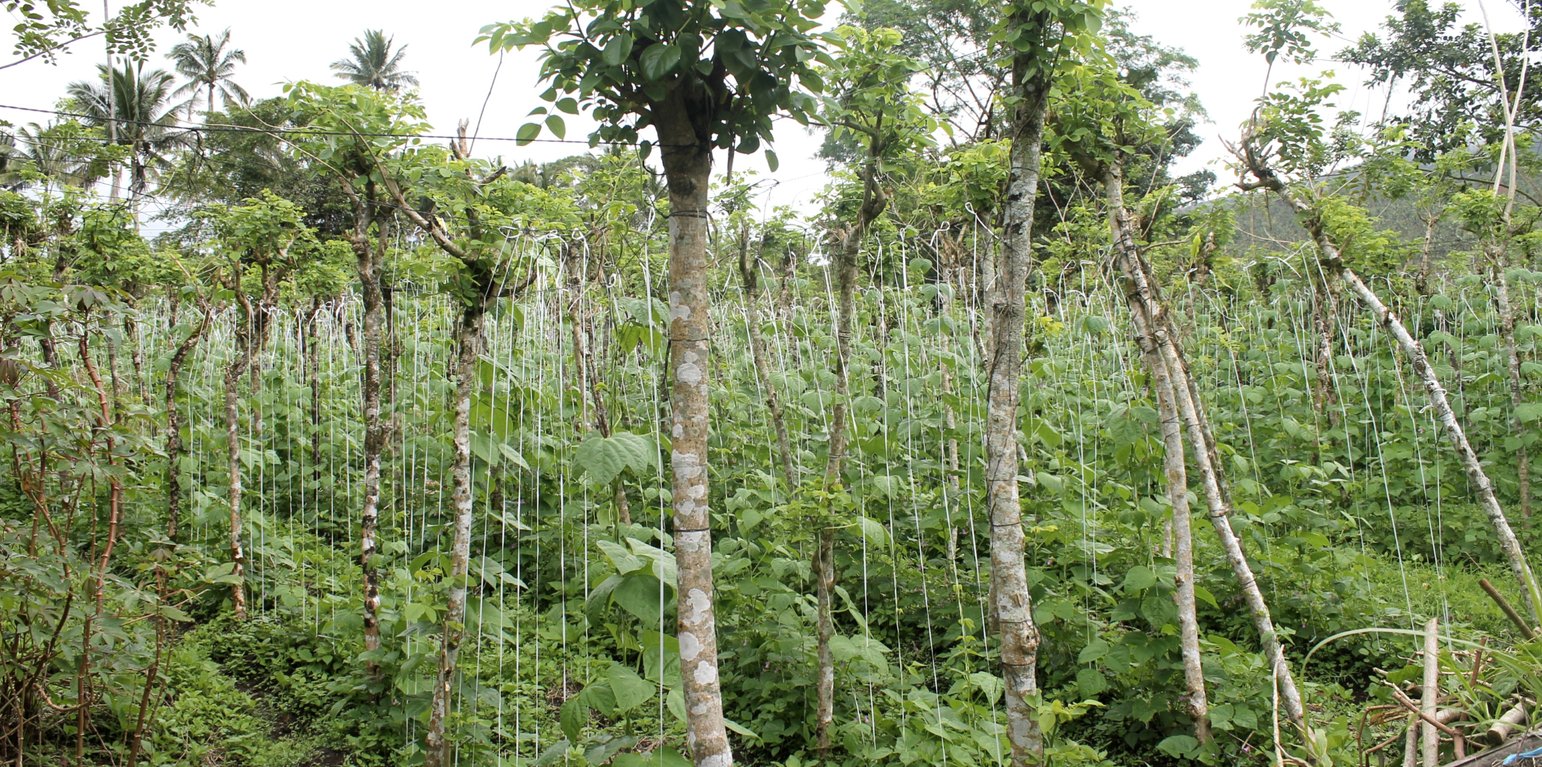



The Highly Diversified Cropping in Live Trellis System is a traditional or local farmers' initiative technology widely practiced in Brgy. Bukal, Nagcarlan, Laguna situated in the area of Mt. Banahaw. The area with rolling to hilly terrain is receiving an annual rainfall of 1000-2000 mm. Each of the farmers who practiced the technology has 0.5 to 1.0 ha production area. Moreover, the community is accessible to infrastructures such as schools and market. Soils in the area is relatively good for agriculture cultivation.
Kakawate, a small to medium-sized, thornless tree which usually attains a height of 10-12 m is being used as live trellis or "balag" to various annual crops such as tomato, cucumber, chayote, beans, and ampalaya in the community. The cropping system is highly diversified since crop rotation is being practiced throughout the year. Aside from being an anchorage for annual crops, kakawate also stabilizes sloping lands and reduces soil erosion due to its strong roots which can grow 3-5 meters laterally, thereby holding the soil firmly. They are planted in a row of approximately 2-3 meters making it more effective in preventing soil erosion. Furthermore, kakawate is being trimmed and maintained every 3-6 months or as needs arise to a approximate 3 meters high as live trellis, the trimmed leaves are very rich in nitrogen and will eventually serve as compost or crop cover. These will help in improving soil quality and moisture in the soil. In addition, kakawate has multiple uses and benefits; they can serve as hardwood or firewood when matured, as materials in making furniture and anchorage for flowering plants like orchids.
In establishing the live trellis system, kakawate trunks/or cuttings "quick sticks" with at least 2-meter height are planted in a row. An estimate of 0.5 to 1 meter planting distance within a row and also between rows is used. When the kakawate trunks are already set up and planted, they are interconnected using a metallic wires. Along these wires, plastic straws are tied in a vertical position whereby crops can utilize this straws for creeping/ climbing . Finally, the desired crop will be planted according to their cropping pattern. Maintenance of the technology includes: weeding and trimming. During infestation, application of pesticide is done but in minimal.
The technology requires manual works resulting to elimination of machines that contributes to soil compaction.
The technology has been a practice in the community for a long time, and land users continue to adopt the technology because of it's easiness and inexpensiveness to establish, and low cost in terms of maintenance activity. Adding up to this is the variety of plants to be grown, making their market more profitable.
Gliricidia normally grows in tropical countries like the Philippines and is being utilized as hedgerows for erosion control measures. Over the years, its effectiveness as erosion control is known, and an increasingly used forage crop in cut-and-carry systems.
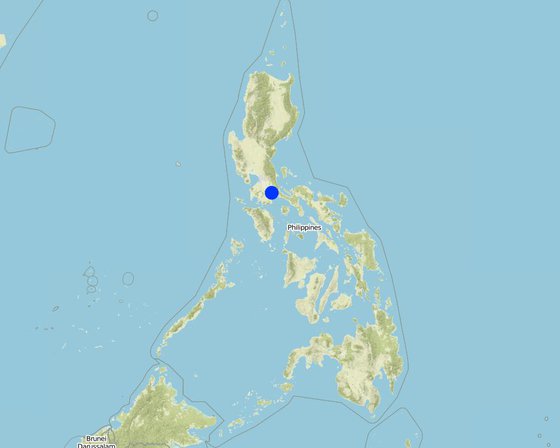
Location: Brgy. Bukal, Nagcarlan, Laguna, Philippines
No. of Technology sites analysed: single site
Spread of the Technology: evenly spread over an area (approx. 1-10 km2)
In a permanently protected area?:
Date of implementation: 1950; more than 50 years ago (traditional)
Type of introduction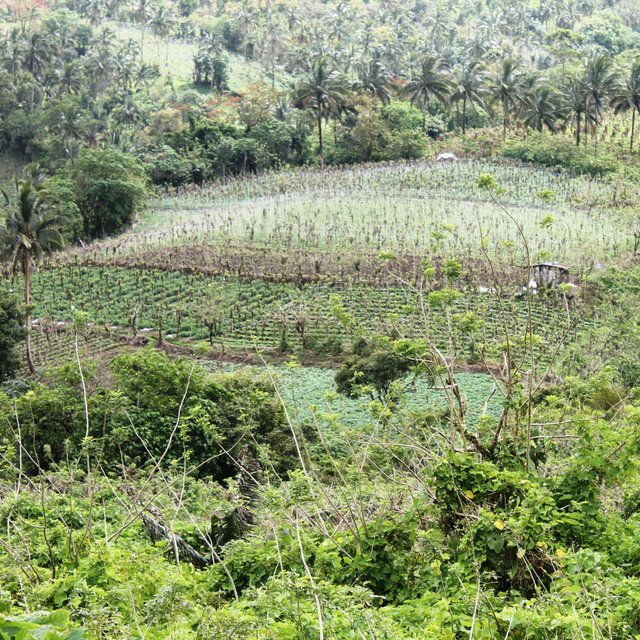
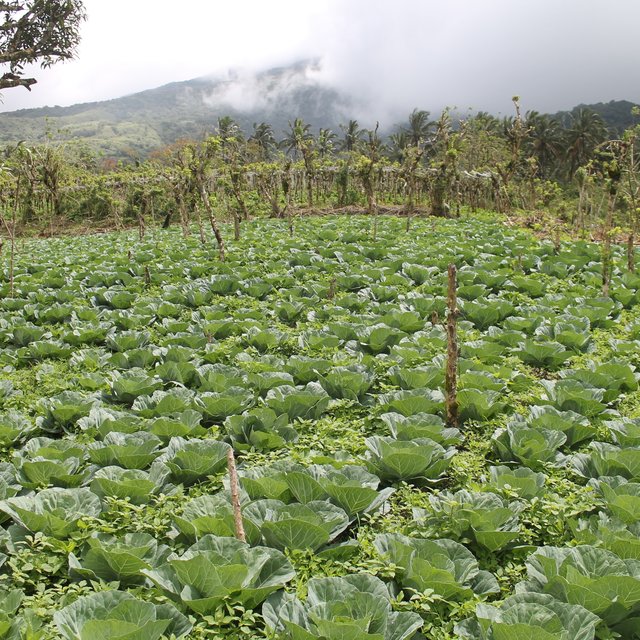




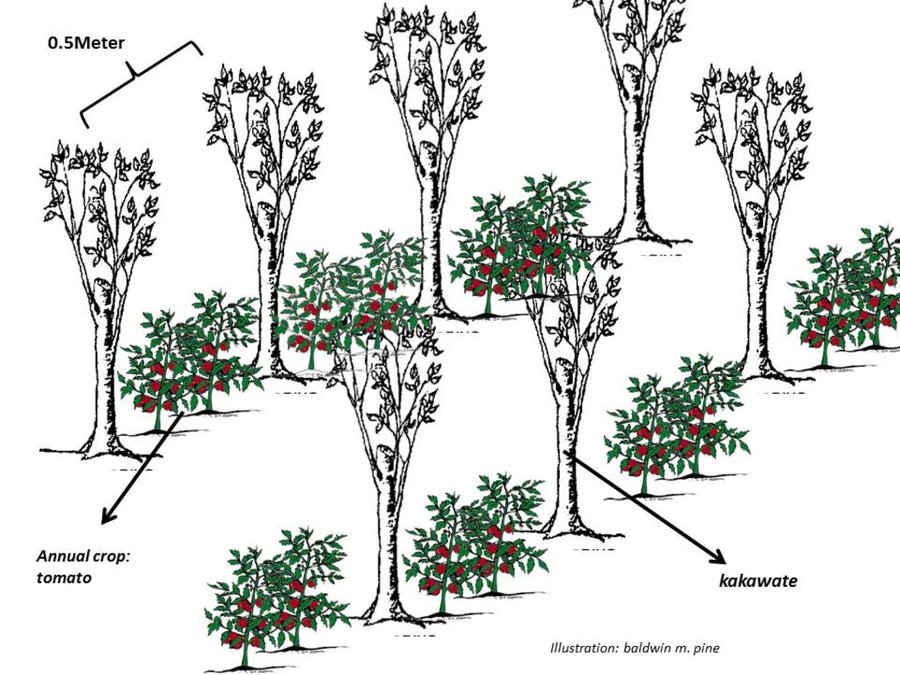
| Specify input | Unit | Quantity | Costs per Unit (Philippine Peso (Php)) | Total costs per input (Philippine Peso (Php)) | % of costs borne by land users |
| Labour | |||||
| Manual labour: Weeding | person-days | 3.0 | 300.0 | 900.0 | 100.0 |
| Manual labour: Planting | person-days | 3.0 | 300.0 | 900.0 | 100.0 |
| Manual labour: Fertilizer Application | person-days | 3.0 | 300.0 | 900.0 | 100.0 |
| Manual labour: Harvesting and Hauling | person-days | 3.0 | 300.0 | 900.0 | 100.0 |
| Plant material | |||||
| Kakawate cuttings (cuttings are abundant in the area and not for sale) | 100.0 | ||||
| Tomato @ 100grams per can | can | 1.0 | 1950.0 | 1950.0 | 100.0 |
| Cucumber @ 100grams per can | can | 1.0 | 600.0 | 600.0 | 100.0 |
| Chayote (seeds are abundant in the area) | 100.0 | ||||
| Fertilizers and biocides | |||||
| Inorganic fertilizer: Urea | bag | 5.0 | 1500.0 | 7500.0 | 100.0 |
| Organic fertilizer: chicken dung | bag | 5.0 | 450.0 | 2250.0 | 100.0 |
| Pesticide | bottle | 1.0 | 280.0 | 280.0 | 100.0 |
| Construction material | |||||
| Metal wire ( can be used for a long time, up to 10 years life span | roll | 6.0 | 480.0 | 2880.0 | 100.0 |
| Straw | roll | 10.0 | 100.0 | 1000.0 | 100.0 |
| Total costs for establishment of the Technology | 20'060.0 | ||||
| Total costs for establishment of the Technology in USD | 401.2 | ||||
| Specify input | Unit | Quantity | Costs per Unit (Philippine Peso (Php)) | Total costs per input (Philippine Peso (Php)) | % of costs borne by land users |
| Labour | |||||
| Weeding | person-days | 3.0 | 300.0 | 900.0 | 100.0 |
| Trimming of kakawate | person-days | 3.0 | 300.0 | 900.0 | 100.0 |
| Application of organic fertilizer | person-days | 3.0 | 300.0 | 900.0 | 100.0 |
| Application of inorganic fertilizer | person-days | 3.0 | 300.0 | 900.0 | 100.0 |
| Equipment | |||||
| Spraying of pesticide | person-days | 3.0 | 300.0 | 900.0 | 100.0 |
| Total costs for maintenance of the Technology | 4'500.0 | ||||
| Total costs for maintenance of the Technology in USD | 90.0 | ||||
An increase in production due to crop diversification
Organic farming is a common practice in the community, and with this, it aids in the development of crop quality.
Kakawate are being utilized as forage crop for ruminants in the area.
Kakawate is rich in Nitrogen.
Kakawate when matured can be utilized as firewood and materials for making furnitures.
Crop rotation makes the technology diverse.
The area is maximized for cultivation at a minimum soil disturbance.
The application of inorganic fertilizer is minimal due to organic farming.
Farmers' income is increased due to crop diversicification
Farmers' income is increased due to crop diversicification.
The continued adoption of the technology testifies that SLM and/land degradation knowledge is improved in the community.
Kakawate when left on the ground aids in the improvement of soil moisture.
Crop rotation practice improves soil cover.
Over the years, kakawate is proven to be an effective erosion control measure in the sloping areas.
Manual cultivation aids in minimal disturbance of the soil, thereby does not contribute to soil compaction in the area.
Organic farming is a practice in the community.
Crop rotation helps in the decreased of pest population.
The technology requires manual cultivation with least or no machine intervention, organic farming is a must with minimum usage of inorganic fertilizer, and biodiversity is also encourage. With that, the technology is believed to be effective to address carbon emission and greenhouse gases.